Tree Health Monitoring using Remote Sensing
1. Tree Health Monitoring using Remote Sensing
Remote Sensing (RS) provides information on the growth, physical and health status of vegetation which can be used for tree management. Highways Department maintains a large number of trees over the whole territory. The on-site inspection of tree is labour intensive for identifying trees with deteriorating health conditions and/or under stress that may eventually lead to tree failure. An integrated approach of using Remote Sensing and Geographic Information System (GIS) to complement tree inspection work by mapping the distribution and health conditions of the urban trees. Highways Department has explored the applicability and feasibility of remote sensing data, particularly multispectral aerial photographs, to monitor tree health by developing a Tree Health Index (THI) and deploying a Tree Health Monitoring System (THMS)with the aim to provide tree health detection tool to complement site inspection.
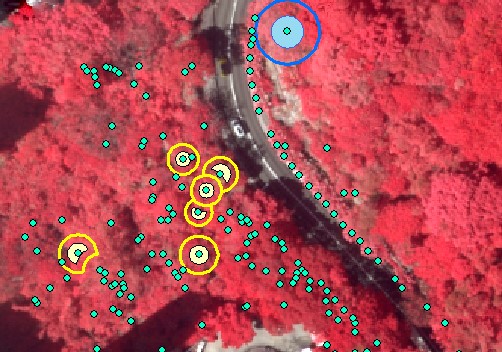
Tree samples (healthy / unhealthy) selected for model development, overlaid on Aerial Photograph
2. Acquiring Basic Tree Data from LiDAR data
Airborne Light Detection and Ranging (LiDAR) is one of the advanced remote sensing technologies to acquire structure and biophysical attributes of trees. Major components of a LiDAR system comprises of a laser scanner, an inertial navigation system and a Global Positioning System (GPS) system carried out by a flying platform over the terrain. A high spatial resolution LiDAR data with high point cloud density can be used to extract high precision tree attributes such as tree height, crown spread and diameter at breast height (DBH). Highways Department conducted a LiDAR survey, using an integrated UAV LiDAR system (HawkScan HS300), to extract tree dimensional data.
Segmentation and Extraction of Tree Data
Advanced algorithms were applied to segment the point clouds into the individual tree, tree height, and canopy spread size. The diameter at breast height (DBH) was estimated by developing and applying regression models using the tree shape parameters derived from the 3D tree models. The algorithms were evaluated using the tree segments to compare with the reference tree data list.
Video: Tree branches segmentation results using terrestrial LiDAR data
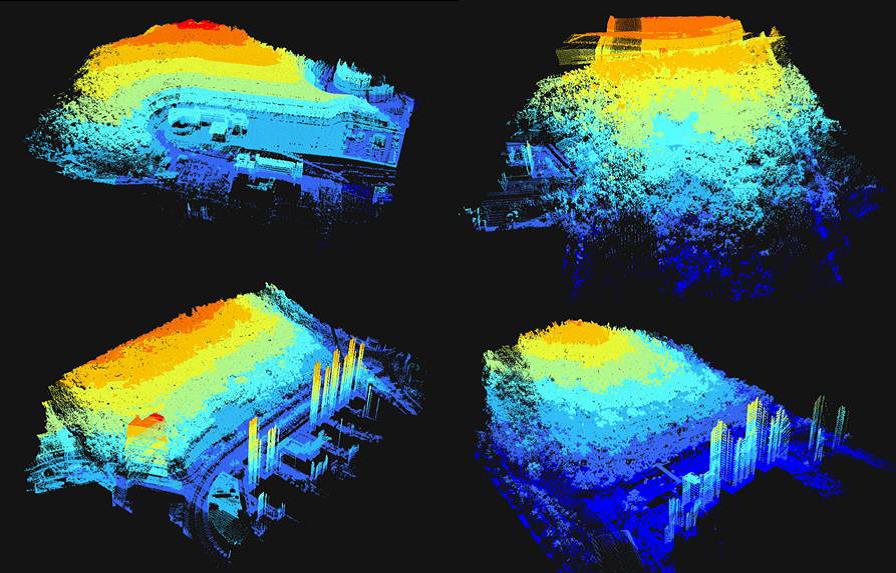
Point cloud data collected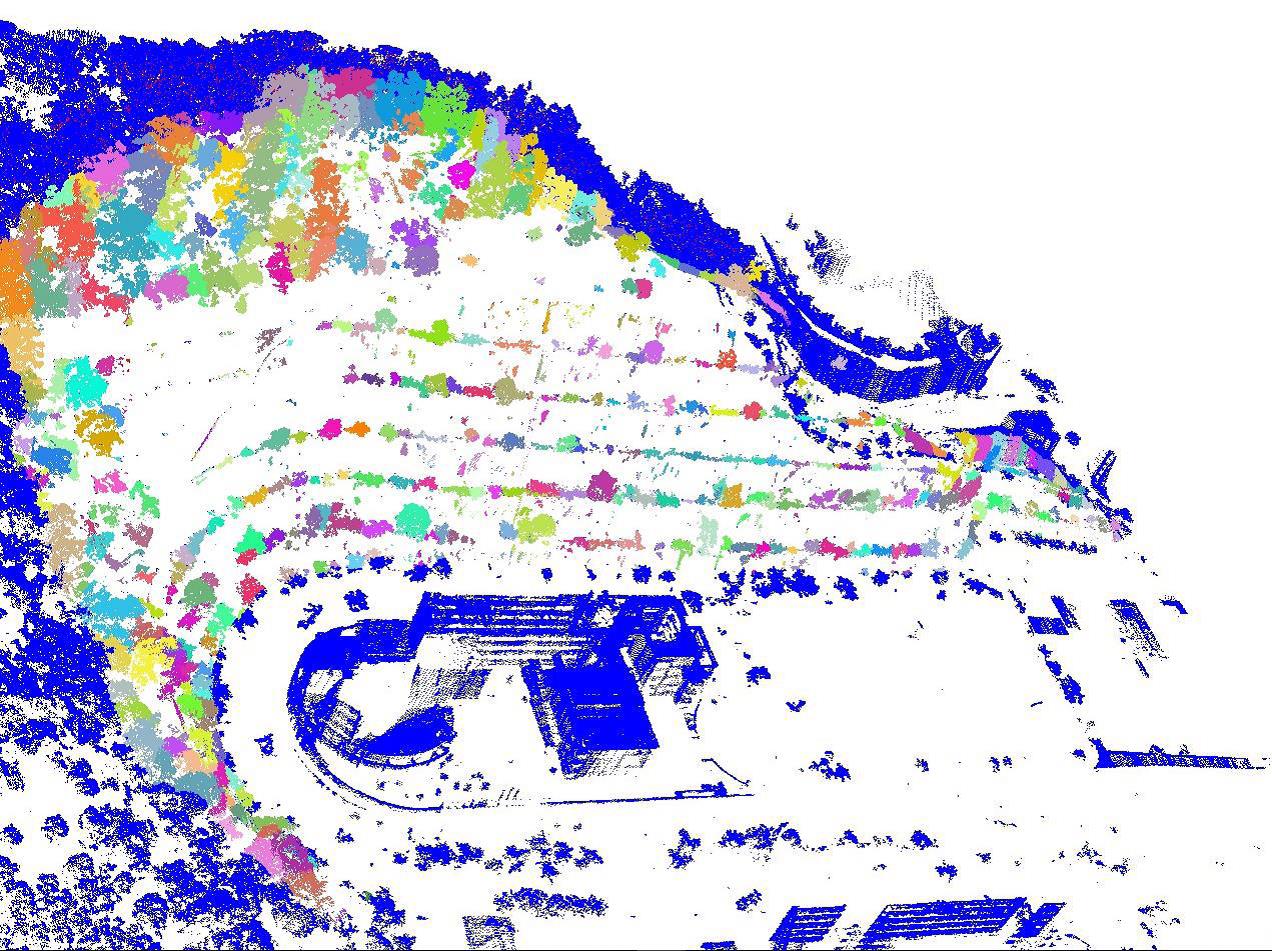
Preliminary tree detection result in segmentation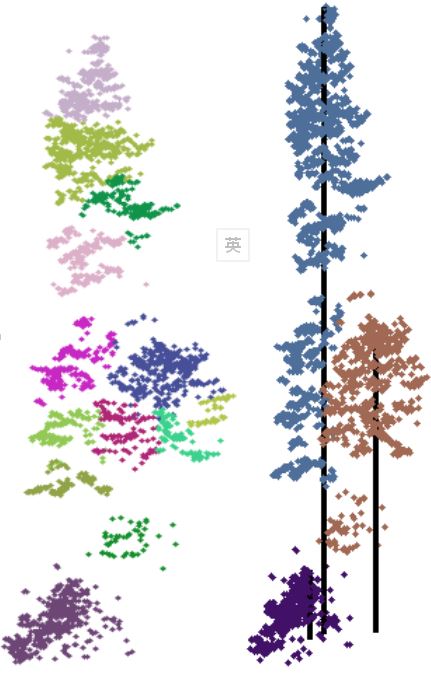
Single tree segmentation
3. Hyperspectral Imaging for Identifying Common Tree Species and Vegetation Health Conditions
Hyperspectral imaging is one of the contemporary remote sensing approaches. It involves spectroscopy and a fine spectral resolution camera which is used to provide high-resolution spectral data. The hyperspectral data contains over 100 contiguous narrow-band of 10 nm or even finer bandwidths. It has been widely used for species identification and vegetation monitoring based on the spectral reflectance signatures, whereas variability of other plant conditions, such as leaf area index, the amount of live and senesced biomass, moisture content and plant pigment contents (e.g. chlorophylls and anthocyanins) can be detected by the assessing patterns of spectral reflectance response.
Hyperspectral Images of Common Tree Species
Highways Department used the hyperspectral camera with 204 bands in Visible and Near-Infrared wavelengths (400 to 1000 nm) to establish the foremost spectral library of the common urban tree species in Hong Kong. A total of 450 hyperspectral images of 75 urban trees belonging to 19 species and 6 families were acquired using the hyperspectral camera. These trees were meticulously selected by considering the species diversity, health conditions, site feasibility and suitability.
Spectral Library
A tree canopy is comprised of varying arrays of leaves – healthy, unhealthy, sunlit, shadowed, new, young, and mature leaves. Tree branches, trunk and canopy shadow also contribute to the accumulative reflectance of a canopy. The mean canopy spectral signature of each tree is computed and plotted to develop a hyperspectral library of the 19 urban tree species in Hong Kong.
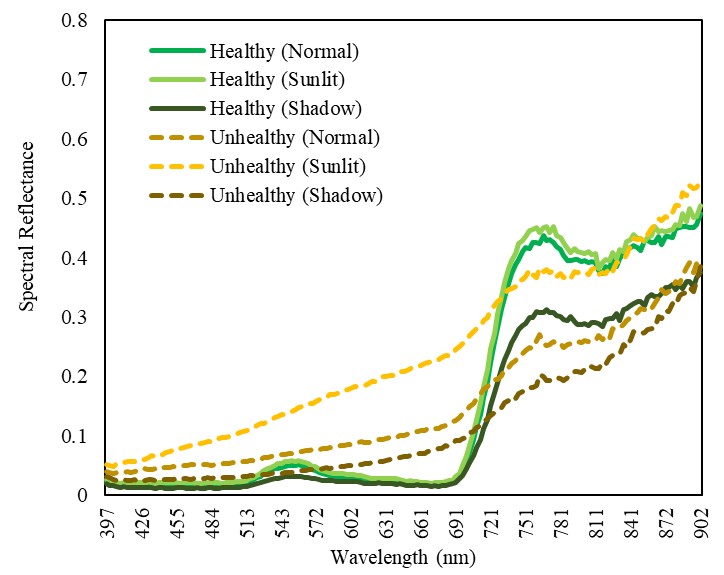
Spectral signatures of representative canopy parts with a different health / light conditions in a single canopy






